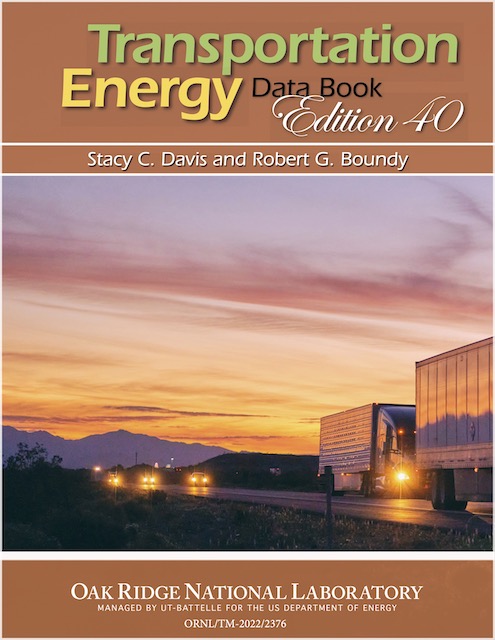The average car used less than 2,800 British thermal units (BTUs) of energy per passenger-mile in 2019, according to the latest edition of the Department of Energy’s Transportation Energy Data Book. This is nearly a 25 percent improvement since 1999. It also made cars more energy efficient than transit in every urban area in the country except New York and San Francisco.
 Click image to download a 16.4-MB PDF of this report. Click here to download Excel spreadsheets for the 361 tables in the report (11 MB).
Click image to download a 16.4-MB PDF of this report. Click here to download Excel spreadsheets for the 361 tables in the report (11 MB).
The Department of Energy releases its annual update to the data book every February, but I wasn’t paying attention when the last one came out. In fact, it doesn’t say a lot that’s new since the previous one was issued in 2021, but it shows that both autos and airplanes continue to improve their energy efficiencies, the latter by 42 percent since 1999. Continue reading














